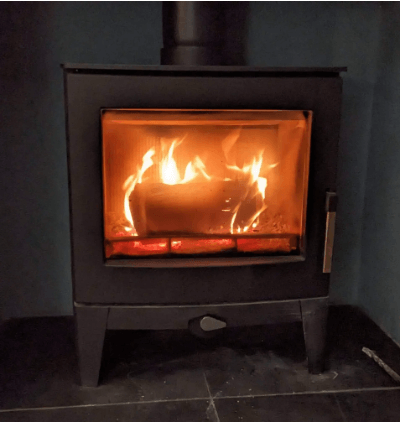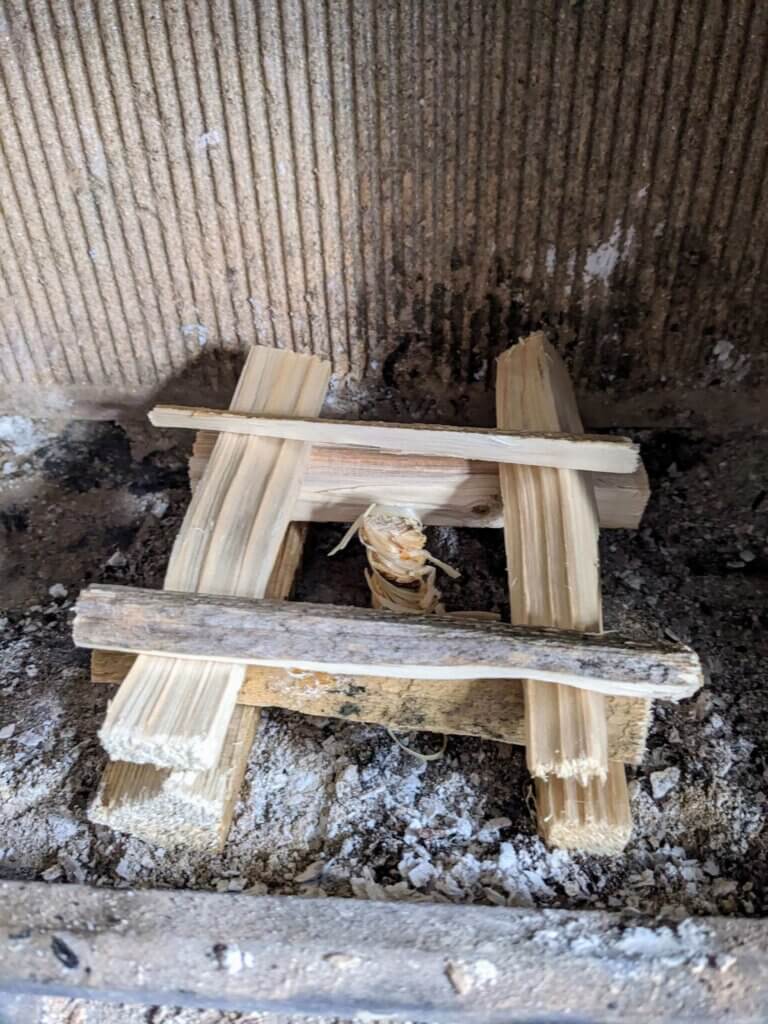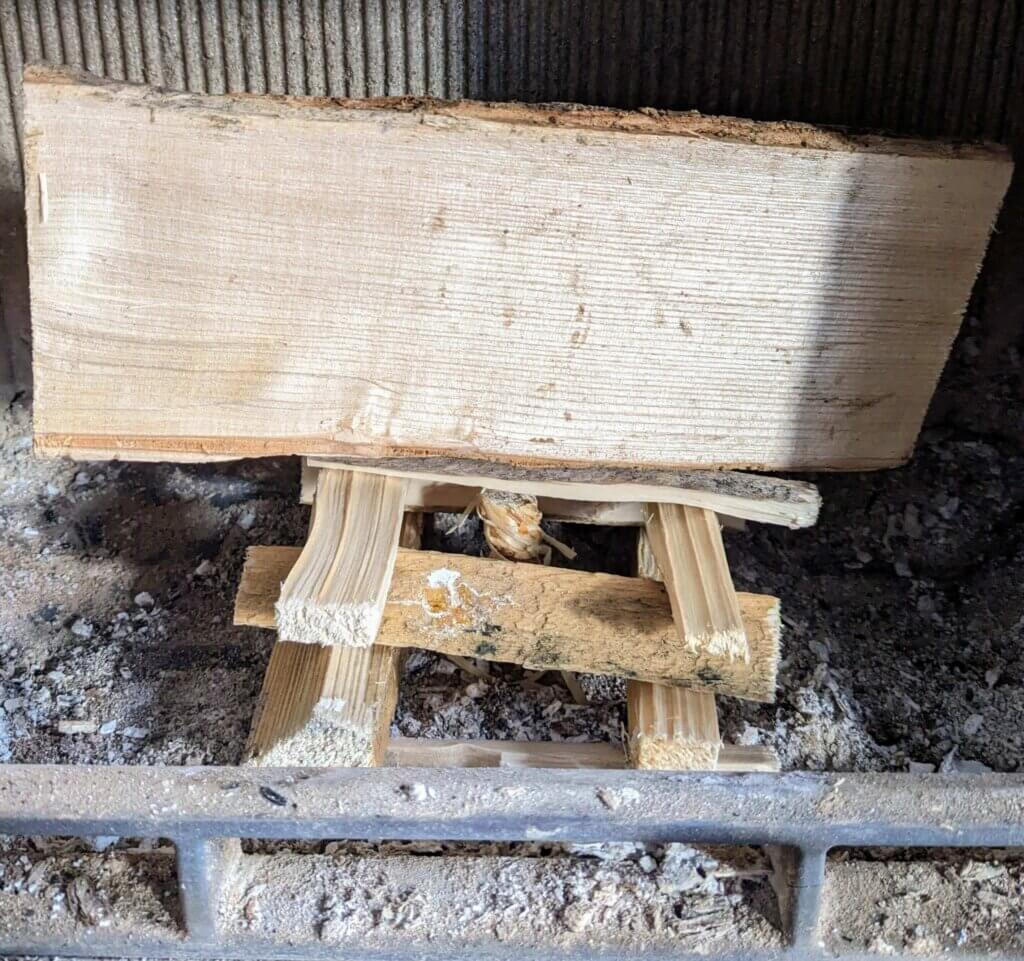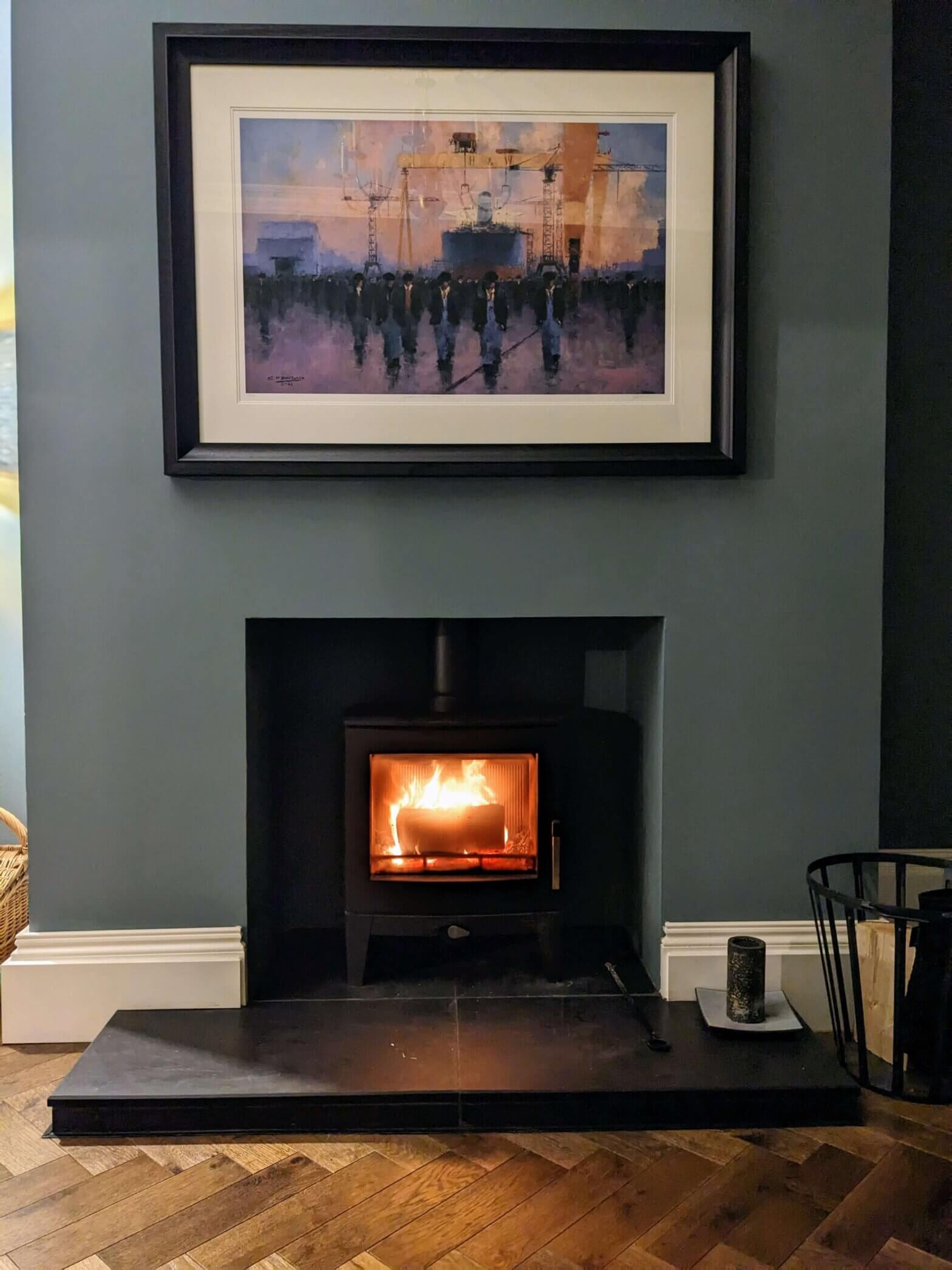Short Answer:
- Basic Summary: This blog guides you through selecting the best wood burner, focusing on efficient design and the value of external air supplies.
- The One Lesson: The right wood burner, with proper airflow, creates optimal warmth while minimizing wasted energy.
- My Expertise: I share my firsthand experience choosing a wood burner, offering advice I discovered through practical use.
- Benefit to Reader: Readers gain knowledge to select a wood burner that effectively heats their home and discover the benefits of a direct vent model.
Full Article:
Ready to add a cozy wood burner to your home? I’ve got all the insider tips for choosing the perfect stove and maximizing its warmth! Get ready to learn about efficient burning, the importance of proper air supply, and why I absolutely love my direct vent model. My experience and practical advice will help you find the perfect wood burner to keep you toasty all winter long.
What is a direct vent wood burner, and why does a vent matter? Are you considering adding a wood burner to your home? With the cold weather approaching, many people are looking for ways to keep their homes warm and cosy. Before you rush out to buy a wood burner, it’s important to understand the different types available and which one will best suit your needs. In this blog post, I look at the importance of air supply when choosing a wood burner, specifically Direct Air Supply Stoves. Keep reading to find out why air supply is so important in selecting the perfect wood burner for your home. And why I invested in a direct vent wood burner.

Understanding the basics: what is a wood burner?
If you’re new to the world of wood burners, you might be wondering what exactly they are and how they work. A wood burner, also known as a woodburning stove or a log burner. It is essentially a heating appliance that uses wood as its fuel source. It consists of a firebox, where the wood is burned, and a flue, which directs the smoke and gases outside.
Woodburners have been around for centuries and have been a popular choice for heating homes, especially during the winter months. They not only provide a great source of heat but also add a cosy and inviting ambience to any space.
The hearth, or the base of the wood burner, is typically made of fireproof material such as stone or brick. This helps to protect the surrounding area from the heat. The firebox is where the wood is burned. It is designed to efficiently burn the wood while minimising the amount of smoke and emissions released.
One of the most important things to consider when choosing a wood burner is the air supply. Proper air supply is essential for the combustion process and affects both the efficiency and safety of the wood burner. External supply stoves, also known as direct air supply stoves, are designed to draw in air from outside the home, rather than from within the room. This ensures that the wood burner receives a constant and clean air supply, resulting in more efficient and cleaner burning.
In addition to the air supply, other factors to consider when choosing a wood burner include the size of the room you wish to heat, the type of wood you will be using, and the overall design and style of the wood burner.
Now that you have a basic understanding of what a wood burner is, let’s dive deeper into the importance of air supply and why it matters when choosing a woodburner.
Importance of air supply in direct vent wood burners: an overview
Proper air supply is essential for the combustion process and can greatly impact the efficiency and safety of your wood burner.
One type of woodburner that prioritises air supply is the external supply stove, also known as a direct air supply stove or direct vent wood burner. These stoves are designed to draw in air from outside the home, rather than from within the room. This is crucial for several reasons.
Firstly, drawing in air from outside ensures that the wood burner receives a constant and clean air supply. This is important because it allows for more efficient burning of the wood. When the wood burner has a consistent and adequate supply of air, it can reach higher temperatures and produce more heat for your home.

In addition to efficiency, an external air supply also promotes cleaner burning. By pulling in air from outside, the log burner avoids using the air in the room, which may contain dust, pollutants, or other particles. This results in a cleaner and healthier environment.
Furthermore, an external air supply helps to prevent the potential negative effects of using up the air in the room. When a woodburning stove relies on the air in the room for combustion, it can create negative pressure. This can cause issues such as backdrafts and drafts from other areas of the house. The hot air going up the chimney has to come from somewhere. With an external air supply for a direct vent wood burner, these problems can be avoided. Why? Instead of drawing cold air into your room from outside – or other rooms, it comes straight from outside and supplies the fire. Then goes up the chimney. Leaving the heat from the fire to radiate into your room – making it nice and cosy. This is really important if you have a well-sealed house without many drafts. Here’s another post all about that.
The other consideration is building regulations – you must have a supply of air when you fit a woodburner. Legally you should have a vent allowing cold air to enter the room or a direct vent into the firebox. What’s the point of drilling a hole that lets cold air straight into your room? … The one you are trying to heat! Much more sensible to properly vent the fire without creating a nasty cold draught in your living room.
In summary, the air supply is a crucial consideration when choosing a wood burning stove. External Supply Stoves, Direct Air Supply Stoves or a direct vent wood burner, prioritises a clean and consistent air supply. This results in more efficient and cleaner burning. By investing in a log stove with a proper air supply, you can enjoy the winter warmth and cosiness without compromising on safety or efficiency.
Choosing your ideal woodburner: types and characteristics
When it comes to choosing the perfect log burner for your home, there are several types and characteristics to consider. Understanding these options will help you make an informed decision and ensure that you find a wood burner that meets your specific needs and preferences.
One of the first things to consider is the size of the hearth. The hearth is the base of the wood burning stove, and it is important to choose a size that fits well in your space. A larger hearth will typically provide more heat output, but it may also take up more room and require additional clearance from combustible materials.
Another important characteristic to consider is the type of wood burner. There are various options available, including traditional log burners, pellet stoves, and multi-fuel stoves. Log burners are a classic choice and provide a traditional and rustic feel. Pellet stoves, on the other hand, use compressed wood pellets as fuel and are known for their convenience and efficiency. Multi-fuel stoves give you the flexibility to burn both wood and smokeless fuel, allowing you to choose the most cost-effective option.
Additionally, you’ll want to consider the heat output and efficiency of the wood burner. Heat output is measured in kilowatts (kW), and you’ll want to choose a wood burner with an output that matches the size of the room you wish to heat. As for efficiency, look for a log burner with a high-efficiency rating, as this means it will convert more of the fuel into heat and waste less energy.
When it comes to style and design, there are endless options to choose from. Whether you prefer a traditional, rustic look or a sleek, modern design, there is a wood burner to suit your taste. Consider the materials used, such as cast iron or steel, as well as the colour and finish options available.
Lastly, it’s important to consider your budget when choosing a wood burner. While there are high-end options available, there are also more affordable options that still offer great quality and performance. Set a budget and prioritise the features that are most important to you, such as air supply, heat output, or design.
By considering the types and characteristics of wood burners available, you can find the perfect one to bring winter warmth and cosiness to your home. Remember to take into account the size of the hearth, the type of woodburner, heat output and efficiency, style and design, and your budget. I’d definitely recommend you look at a direct vent wood burner as an option.
Expert tips: balancing budget with quality when buying a woodburner
Finding the perfect wood burner for your home doesn’t have to break the bank. Balancing your budget with quality is key when it comes to making a smart investment. Here are some expert tips to help you navigate the process and find the best woodburner that fits both your needs and your wallet.
- Set a realistic budget: Before you start shopping for a wood burner, it’s important to determine how much you’re willing to spend. Set a budget that takes into account not just the cost of the wood burner itself, but also any additional expenses such as installation, maintenance, and fuel. By setting a budget upfront, you can narrow down your options and avoid overspending.
- Research different brands and models: Take the time to research different brands and models of woodburners. Look for reputable manufacturers that offer a range of options to suit different budgets. Read reviews and testimonials from other customers to get a sense of the quality and performance of each woodburner.
- Consider long-term costs: While it may be tempting to choose the cheapest wood-burner available, it’s important to consider the long-term costs. A higher-quality wood-burner may have a higher initial price tag, but it could save you money in the long run by being more efficient and durable. Look for wood-burners with high-efficiency ratings and low maintenance requirements to ensure you’re getting the best value for your money.
- Don’t overlook warranties: When purchasing a wood-burner, check for warranties offered by the manufacturer. A longer warranty is a sign of confidence in the product’s quality and durability. Having a warranty in place can provide peace of mind and protect your investment.
- Consider second-hand options: If your budget is tight, consider buying a second-hand log-burner. Many people sell their log-burners when they upgrade or move, and you can often find good-quality used options at a fraction of the cost. Just make sure to thoroughly inspect the log-burner and ask the seller about its history before making a purchase.
Remember, balancing budget with quality doesn’t mean compromising on safety or efficiency. By following these expert tips, you can find a log-burner that meets your needs, fits your budget, and provides years of warmth and comfort in your home. Happy shopping!
DIY installation and safety tips for your woodburner
Now that you’ve chosen the perfect wood burner for your home, it’s time to install it and ensure that it’s done safely. It’s always recommended to seek professional help for installation. But some DIY enthusiasts prefer to tackle the project themselves. If you fall into this category, here are some important DIY installation and safety tips to keep in mind. This is not something I’d recommend. You are bringing fire into your home that burns at several hundred degrees. Much better to get it done professionally. Some things are worth paying for.
- Read the manufacturer’s instructions. Before you start the installation process, thoroughly read and understand the manufacturer’s instructions that come with your wood-burner. These instructions are specific to the model you purchased and will provide step-by-step guidance on how to install it correctly.
- Choose the right location. Selecting the right location for your wood-burning stove is crucial for safety and efficiency. Make sure the area you choose has adequate space for clearance and is away from flammable materials. Additionally, consider the proximity to a suitable flue or chimney for proper ventilation.
- Prepare the hearth. If your woodburner requires a hearth, ensure that it is made of fireproof material and properly installed. This will help protect the surrounding area from heat and prevent potential accidents.
- Install the flue correctly. Proper installation of the flue is essential for the safe operation of your woodburner. It should be correctly connected to the stove and directed outside, allowing for the safe disposal of smoke and gases. Make sure to follow the manufacturer’s instructions and use appropriate materials for the installation.
- Ensure proper air supply. As we’ve discussed earlier, air supply is crucial for efficient and clean burning. When installing your wood burner, make sure that it is properly connected to an external air supply, if applicable. This will ensure that it receives a constant and clean air supply, resulting in optimal performance.
- Test for leak.: After the installation is complete, it’s important to test for any leaks in the flue or stovepipe. This can be done by lighting a small fire and checking for any smoke or gas leakage. If you notice any leaks, immediately turn off the wood burner and seek professional help.
- Practice regular maintenance. Once your wood burner is installed, it’s essential to practice regular maintenance to ensure its efficiency and safety. This includes cleaning the stove regularly, removing ash and debris, and checking for any signs of damage or wear. It’s also recommended to have your wood burner serviced by a professional at least once a year.
- Install a carbon monoxide monitor. These are simple, cheap and vital to keep your family safe (it’s also another Building Regulations requirement by the way).
Maximising efficiency: the role of proper maintenance
To ensure that your woodburner continues to operate at peak efficiency and provide you with warmth and comfort, proper maintenance is crucial. By taking the time to maintain and care for your wood-burner, you can maximise its efficiency and extend its lifespan. Here are some important maintenance tasks to consider:
- Regular Cleaning: Over time, your wood-burner will accumulate ash and debris, which can hinder its performance. It’s important to clean your wood burner regularly to remove these build-ups. Use a brush or vacuum designed for use with wood burners to clean out the firebox and remove any ash or soot from the flue.
- Check and Replace Gaskets: The gaskets on your woodburner help create an airtight seal, which is essential for efficient combustion. Regularly check the gaskets for wear and tear, and replace them as needed. This will help prevent air leakage and ensure optimal burning efficiency.
- Monitor and Clean the Flue: The flue of your wood burner plays a crucial role in directing smoke and gases out of your home. Over time, the flue can become blocked or coated with creosote, which can reduce its efficiency. Regularly inspect the flue for any blockages or build-ups and clean it if necessary. A clean flue will ensure that your wood burner operates safely and efficiently. Get it swept yearly.
- Keep the Air Vents Clear: Proper airflow is essential for efficient combustion. Make sure that the air vents on your woodburner are clear of any obstructions, such as dust or debris. This will ensure that your wood burner receives an adequate air supply and burns wood efficiently.
- Schedule Professional Servicing: While regular maintenance tasks can be done by DIY enthusiasts, it’s also important to schedule professional servicing at least once a year. A qualified technician will be able to thoroughly inspect and clean your wood burner, as well as identify any potential issues before they become major problems.
Proper maintenance means you can maximise the efficiency and lifespan of your wood burner. Regular cleaning, checking and replacing gaskets, monitoring and cleaning the flue, keeping the air vents clear, and scheduling professional servicing are all key maintenance tasks. They will help your wood burner perform at its best. Remember, a well-maintained wood burner not only provides warmth and comfort but also helps to reduce energy consumption and minimise environmental impact.
Tips on lighting your wood burner

The only way to light your wood burner:
- The simplest way to light your woodburner is to create a little # of kindling logs with a firefighter in the middle. Make this a sustainable firefighter. They are excellent. A link to buy them is below.
- On top of that, you put a kiln-dried log. A really important point here; you’ve spent all this money and time, don’t burn any old rubbish in it. Use kiln-dried hardwood logs. They are worth every penny. They burn clean, slowly, are easy to light and you only need a few each evening. Long-term I bet they are worth the money. Less polluting, less soot in your flue and they burn hotter.
- Open up the vents to the max
- Light the firefighter and leave the door ajar until it’s properly burning
- Slowly close the door only when the big log is properly alight. Then close the vents down so it burns more slowly. A direct vent wood burner should light really quickly. If it’s particularly cold or you have a very tall flue, it might take longer to heat the gasses in the flue and get the draw going. Just be patient.
- Sit bag with a glass of something warming and enjoy!

Recap and next steps in your woodburner journey
Congratulations. You’ve made it to the end of my blog post on choosing the perfect wood burner for your home. By now, you should have a solid understanding of the basics of wood burners, the importance of air supply, and the different types and characteristics to consider. You’ve also gained expert tips on balancing your budget with quality when buying a wood burner and learned about DIY installation and safety tips. Plus, we’ve covered the essential maintenance tasks that will keep your wood burner operating efficiently for years to come. And given you the best way of lighting it.
So, what’s next in your woodburner journey? Here are a few important steps to consider:
- Determine your specific needs: Now that you’re armed with knowledge, take some time to assess your specific heating requirements and preferences. Consider factors such as the size of the room you wish to heat, the style and design that appeals to you, and your budget.
- Research and compare options: With your needs in mind, continue researching different brands and models of wood-burners. Compare their features, performance, and customer reviews. This will help you narrow down your choices and find the wood-burner that best meets your requirements.
- Visit showrooms or contact retailers: To get a real feel for the wood burners you’re interested in, consider visiting showrooms or contacting retailers. This will allow you to see the wood-burners up close, ask questions, and get personalised advice from the experts.
- Get professional advice if needed: If you feel unsure about any aspect of choosing or installing a wood-burner, don’t hesitate to seek professional help. A qualified installer can ensure that your wood-burner is installed correctly and safely, giving you peace of mind.
- Make your purchase: Once you’ve done your research and considered all the factors, it’s time to make your purchase. Remember to keep your budget in mind while prioritising quality and the features that matter most to you.
- Enjoy the warmth and comfort: After your wood-burner is installed, sit back, relax, and enjoy the warmth and comfort it brings to your home. With proper maintenance and care, your wood-burner will continue to provide cosy evenings for years to come.
We hope this blog post has been informative and helpful in your woodburner journey. And convinces you that a direct vent wood burner is the one to go for.
